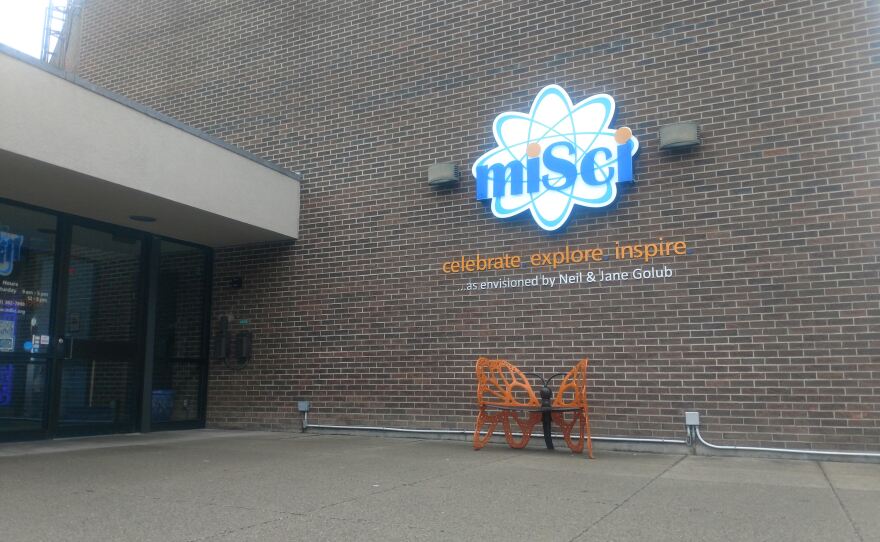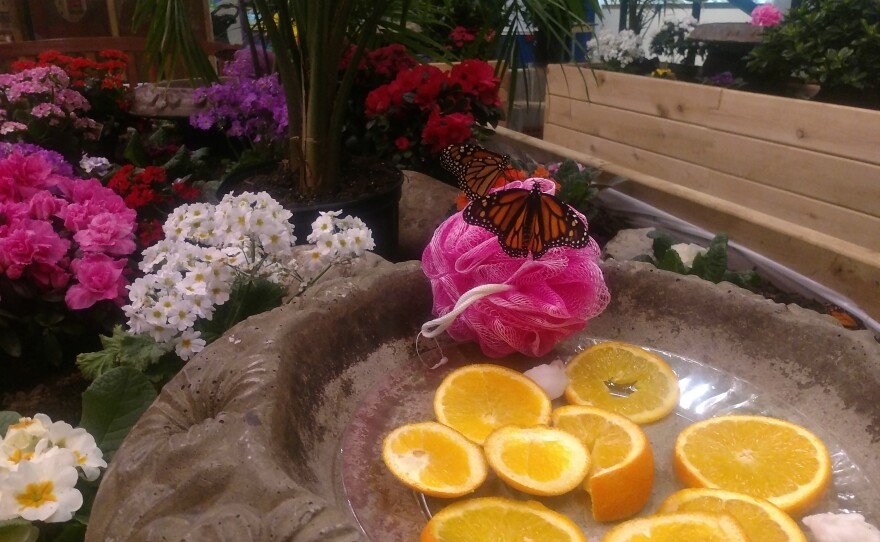Dr. Gina Gould has stepped into her new role as president of the Museum of Innovation and Science in Schenectady, New York. WAMC’s Elizabeth Hill Spoke with Gould about her move to the Capital Region and her aspirations for MiSci moving forward.
Gould grew up in Long Island and earned her doctorate from Columbia University in earth and environmental sciences. The 57-year-old has spent her entire life in museums from The American Museum of Natural History in New York City to curator of the Florida Museum of Natural History’s Hall of Florida Fossils: Evolution of Life and Land. Gould is replacing Dr. William Sudduth, who stepped down after five years with MiSci.
“I’ve been coming to the Capital Region as a visitor since I was an undergraduate in SUNY Oswego, on of my friends used to live up here and I would come and visit and when I was a grad student in New York City I would take the train up to Albany just to get out of the city, and you know that ride up along the Hudson River is rather bucolic. I just love it, I mean I am one of those people that goes to the capitol, and spends five hours looking at the portraits in the capitol building and the renovation of the staircase there is so much here to see there is so much revitalization going on in Schenectady as well as Troy, there are great places to eat. The geology, I have a background in geology, and for me the geology tells this amazing story that goes back 450 million years, I just, love it.”
“I’ve been in museums since I was an undergraduate and it’s because of the objects, the collections each one tells a unique story about the history of life on earth or the history of how our earth evolved. As you start to learn and understand which each one is, you walk around the collections and you hear these little stories going on in your head and you never feel alone and you start to connect the dots from one thing to another, for example the heyday of Troy is because they rerouted the water system to support the steel production, well that’s all because of the geology and then you have to think about well what is that geology? And so the stories, it’s just one story after another that are all intertwined and that’s what I love about museums because they are all in the collections.”
MiSci in the located in downtown Schenectady and over the past 10 years has shifted from a historical concept for exhibits and attractions to that of science and innovation. Every exhibit, program and event works to inspire visitors to celebrate science and innovation from the past, present and future. From a sand exhibit where you can create your very own topographical map to the last 125 years of General Electric innovations. Dr. Gould hopes to expand on this core mission as new president.
“MiSci has come quite a long way in the past five years and I look forward to taking it even further and what I mean by that is really showcasing the collections that MiSci has in innovation over the past 150 years and to look at how that human innovation has had a response to the environment, and to demonstrate how humans are really part of the environment and not something separate like we sometimes want to think about. I want our exhibits to be broader in scope in terms of the story that we are telling, it’s all about the story and I want to include art to help tell those stories.”
After receiving her BS in Zoology at SUNY Oswego, Dr. Gould spent 3 years from 1984-87 with the Peace Corps as the curator of Mammalogy with the National Museum of Natural History of Paraguay. Gould is looking to bring this global perspective to future MiSci exhibitions.
“Because we are a global economy now and a global community and we need to talk about how everything we do in our daily lives is part of the global world. So, maybe for example my cell phone, that innovation, that battery and other component of my cell phone come from some remote place in Africa where there’s a mine for that, and I think people really need to understand where our stuff comes from. I mean I have this desire to do a fish fry exhibit because I think it would be great for people to know where their seafood comes from. Whether they are having a bouillabaisse or their having different oysters or shrimp. (Nat sound of water from MiSci) Just how far things come and what it takes to get their food to their plate, because that is innovation it’s an airplane, it’s a boat you have to vacuum pack it you have to put it in liquid nitrogen. All those things are innovations that humans have done to make your life so much easier.”
Can you share with us some of the exhibits?
“Well I am very excited about the butterfly exhibit. I don’t think most people really realize the importance butterflies and moths the group is called lepidopterans and they don’t actually in their wing form live long but what they do in their 2-6 weeks of flight life, I like to call it, is extraordinary in pollinating our plants. We wouldn’t have this spectacular array of trees and shrubs and flowers without them and I love the fact that the kids can come and get an idea of how important something so small is to life on earth. We have a brain exhibit coming up which of course there has been a lot about brain research and brain discovery lately and that field is happening very quickly in terms of what our understanding is and I think people are going to be really interested to learn that we only use a fraction of our capacity in our brains and to learn also to that we can train our brains just like your muscles, it’s a muscle, how to use different parts of your brain to do different tasks. We have the science of toys coming up, people don’t really realize that there is a lot of research that goes into creating toys just the mechanics of it that’s the engineering and the mathematics of the engineering part of it but also the components that make up those toys what is the material. I think people are going to find that very interesting that there are scientists that actually work on creating these toys. What a cool job that would be, right?”






